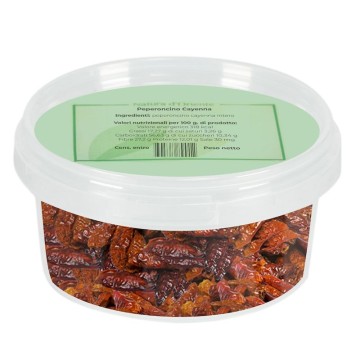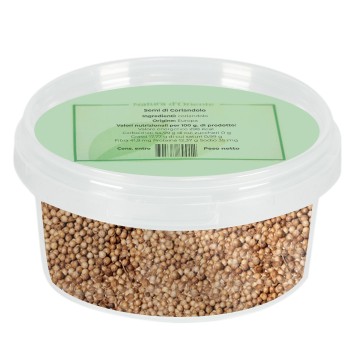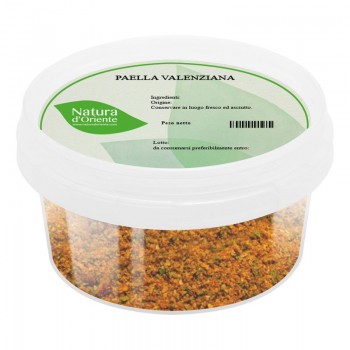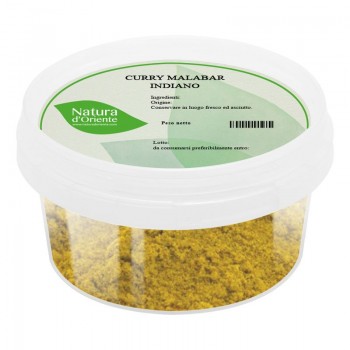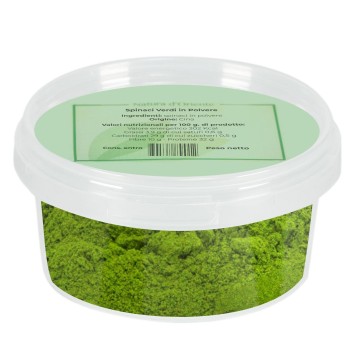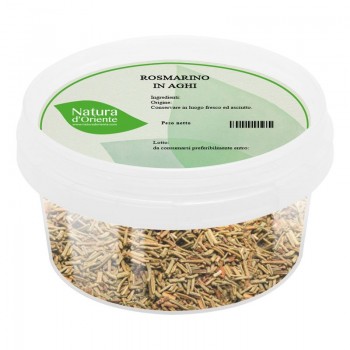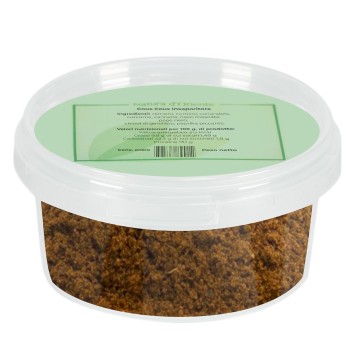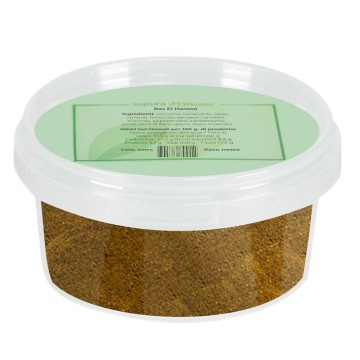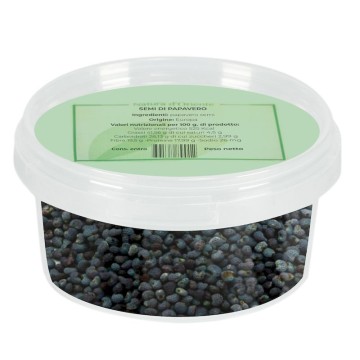When it comes to cooking, spices play a fundamental role in enhancing the flavors of our dishes. Cooking with black cardamom can give a touch of spiciness to recipes, and a beneficial boost to the body. For this reason, it has been used since ancient times in India and Asian cuisines.
It comes from the oval pods of the black cardamom plant, which contain small black seeds: these contain the aromatic potential of this spice. Dried, often over a high flame, black cardamom seeds become a source of a pungent, toasted and savory flavour, with notes that evoke camphor. Shades that make it delicate compared to pepper, and different from the slightly sweet and citrus flavor of green cardamom, with which it should not be confused.
Black cardamom: properties and benefits
In addition to its flavoring qualities, black cardamom seeds are historically used for their properties useful in aiding digestion. Historically, cardamom has often been used to relieve stomach discomfort during the assimilation of food, even mixed with other spices to soothe sensations of nausea and bloating.
These properties of cardamom regarding the gastrointestinal tract are due to active ingredients that improve the absorption of nutrients from foods.
Contained in the essential oil present inside the seeds, these substances have the ability to stimulate the release of gastric juices useful for balancing gastric acids - and the resulting acidity. By acting on the gastric and intestinal glands, the spice helps soothe states of irritation, heartburn and gastrointestinal discomfort after difficult digestion. The digestive properties of cardamom are also useful against constipation and to stimulate the appetite. Furthermore, the carminative virtue of black cardamom can provide relief in the event of abdominal gas and flatulence.
The infusion of cardamom seeds in hot water is useful for digestion and to avoid abdominal swelling, but also for relieve irritation in case of colds and coughs. Black cardamom is also used to improve breath and soothe oral irritations. Its slightly citrusy and fresh taste makes it more pleasant than other spices, and it is also used in aromatherapy as an invigorating smell.
Among its qualities useful for well-being there is also the natural diuretic effect, promoting the expulsion of excess fluid in the body, which can help regulate blood pressure.
The spice is rich in antioxidant compounds, substances that can help protect cells from oxidative damage and counteract the aging process. For this reason, historically the infusion of black cardamom was also considered a panacea for the well-being of the skin, thanks to the presence of vitamin C and minerals such as magnesium and potassium.
You can consume cardamom as a herbal tea useful for providing nutrients to the epidermis but also applied directly to the skin to deeply cleanse and purify it. Beauty masks can be created with ground black cardamom and honey to treat irritated skin.
Nutritionally, cardamom pods contain volatile oils, phenolic acids, lipids and terpenes in essential oils. Antioxidant compounds such as cineole, limonene, pinene, which have potential beneficial effects on our body.
Use of black cardamom seeds in cooking: combinations
There are many ways to use black cardamom in your diet. You can cook with the whole seeds of the pod, or grind the seeds to obtain a spicy and aromatic note in dishes. You can use a mortar or a coffee grinder to crush them and spread their scent. Thanks to the drying process, cardamom is quite smoky and pungent, so it should be dosed with caution: you don't need much to give flavor to a dish, and it should be used in moderation, due to its potency which can overpower other flavours.
Savory recipes: the traditional oriental use of the seeds is known within Indian soups, broths, soups and stews. The addition of black cardamom is also excellent when mixing the seeds with lentils, rice or pasta to make first courses more interesting.
The most common way to use cardamom is in cooking, or in baked recipes of vegetables and roasted meat; on fish in minimal doses for a spiciness that enlivens neutral flavours. To avoid the formation of intestinal gas, you can include 3-4 seeds when cooking vegetables such as cabbage, broccoli or legumes. It does not alter the flavor of food. Black cardamom is used to create spicy rubs for marinating meats and seven barbecue, given its pungent flavor. It can flavor cheeses and sauces for side dishes - black cardamom is great with foods that accentuate their acidity, such as lime juice.
Desserts: Cardamom seeds can be added to bread, ginger biscuits and other baked goods in small quantities to add a tantalizing touch. it is a surprisingly versatile spice for savory foods but does not always suit sweet dishes, for which green cardamom is preferable.
Black cardamom infusion: taking black cardamom seeds is beneficial about half an hour after meals, and can be obtained by inserting a few seeds (1-1.5 grams per day) for each cup of boiling water (approximately 100 °C).
Mixtures: the combination of this spice with others capable of counteracting its smoky note in the aroma is pleasant. It is one of the ingredients of curry and garam masala, typical Indian spice condiments.
Basmati pilau rice with dill and cardamom
Ingredients: basmati rice 450 g - 3 tablespoons of olive oil - 1 cinnamon stick - 15 cardamom seeds - 2 bay leaves - 80 g of onions cut thinly into rings - 25 g of finely chopped dill - 650 ml of chicken broth
Preparation
Rinse the rice several times, drain it well and place it in a bowl . Cover it generously with fresh water and leave it to soak for 30 minutes, then drain well again.
Heat the oil in a pan over medium heat. When the oil is hot, add the cinnamon stick, cardamom seeds and bay leaves and fry for 5-10 seconds, stirring well. Add the onions and fry for 4-5 minutes, stirring regularly until they colour.
Add the drained basmati rice and chopped dill, then continue to stir well. Reduce the heat slightly and cook the rice for 2-3 minutes, stirring until the rice is immersed in the oil and begins to cook.
Add the stock and bring to the boil, adding a teaspoon of salt if necessary to the 'taste. Cover with a lid, reduce the heat to low and cook the rice for 20-25 minutes (or until tender, depending on the type of rice used).
Origins and history of cultivation
The seeds derive from the pods of the black cardamom plant Amomum subulatum, one of the many species of the Zingiberaceae family – the same as ginger. It is a perennial herbaceous plant, whose pods can be used as a flavoring in their whole form, or they can be opened, removing the internal seeds. The seeds can be used whole but are often ground into the powdered form of cardamom. Depending on the drying method, black cardamom can take on a more or less smoky flavour, intense if traditional methods of drying over open flames are used. In India this spice has been widespread for centuries, called kali elaichi or badi elaichi, and is also known as Nepal cardamom or brown cardamom. The black cardamom variety Amomum subulatum, with small, wrinkled pods, is most commonly found in Indian, Nepalese and Pakistani cuisine. Another species, Amomum tsao-ko, produces larger, smoother pods, popular in Chinese and Asian cuisine. Native to the Indian (Himalayan) territory, black cardamom has historically been used in Ayurvedic and Unani medicine to treat some gastrointestinal disorders, nausea, constipation or as a laxative. It is also traditionally associated with the well-being of the liver and genitourinary tract. In classical times for the Romans and Greeks it was used in perfumes and to perfume the breath, while in Arab culture black cardamom was considered an aphrodisiac - the erotic drink was obtained by letting the seeds macerate in boiling water. The black cardamom plant is now also cultivated in other parts of the Asian continent, in particular Sri Lanka, Nepal, Indochina, China; in addition to distant states such as Tanzania and Guatemala, it is available throughout the world and is used in cooking recipes, but also to continue the already attested herbal use of cardamom seeds, oils and extracts.

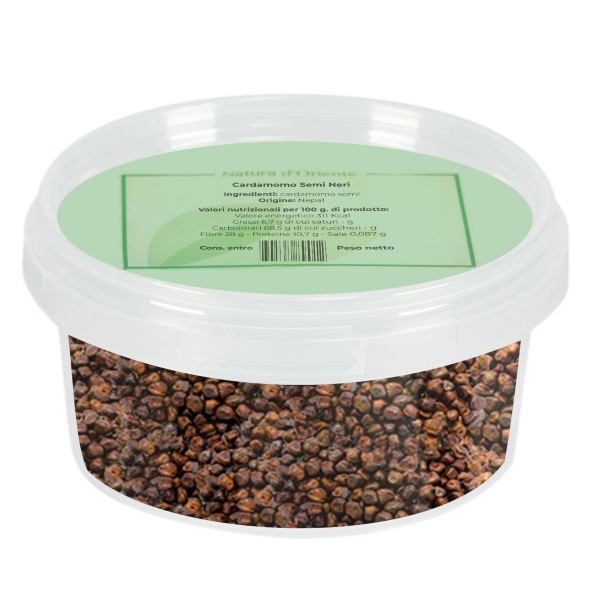









 No reward points for this product.
No reward points for this product.
